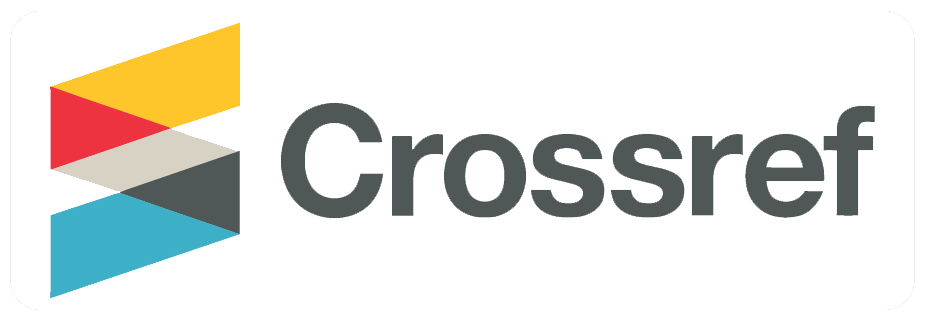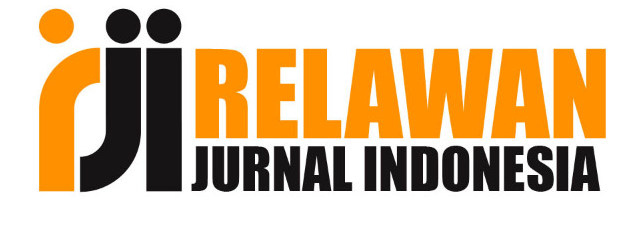Meningkatkan Kualitas Kuat Tekan Beton Menggunakan Bahan Modifikasi Serat Baja
DOI:
https://doi.org/10.36982/jtg.v12i02.2185Abstract
ABSTRACT
Concrete is the construction material most often used in a building. Concrete has its advantages and disadvantages in its application. One of the disadvantages of concrete is the accuracy of the embodiment of the Job Mix Formula which tends to be low. Therefore, further analysis is needed to minimize these shortcomings. Fiber reinforced concrete (fiber reinforced additive) is one of the developments of concrete technology by adding fiber to the concrete mixture. In this study, an experimental method was used with the addition of steel fiber as much as 1.3% to analyze the compressive strength of concrete when modification of the constituent materials using steel fiber or steel fiber. The results showed that the material used by the concrete test material was in the category of feasible. The results of the control of the calculation of the aggregate proportion using the slump test media showed a decrease in the fresh concrete test object at a distance of 14 cm, it concluded that the proportion of the aggregate mixture that makes the concrete test object (job mix formula) is in accordance with the mixed criteria, namely at a distance of 10 cm to 14 cm (12 cm ± 2 cm). The result of the achievement of making concrete test objects is in the results of compressive strength tests. From the compressive strength results, it shows that the compressive strength value of the concrete of the first sample is 9.2 MPa, the second test object is 17.97 MPa and in the third test object, the compressive strength value is 18.53 MPa. In the compressive strength test, the highest value was obtained, namely in the 3rd sample with a maximum crush value of 18.53 Mpa. Thus, the addition of steel fiber material to concrete can improve the quality and compressive strength value of concrete from the target compressive strength value of Fc 16.60 MPa.
Keywords : Aggregate, Concrete, Compressive Strength, Steel fibers.
ABSTRAK
Beton adalah bahan konstruksi yang paling sering digunakan pada suatu bangunan. Beton memiliki kelebihan dan kekurangan dalam pengaplikasiannya. Salah satu kekurangan beton adalah akurasi dari perwujudan Job Mix Formula yang cenderung rendah. Oleh karena itu, diperlukan analisis lebih lanjut untuk meminimalisir kekurangan tersebut. Beton serat (fiber reinforced additive) merupakan salah satu pengembangan teknologi beton dengan menambahkan serat pada campuran beton. Dalam penelitian ini menggunakan metode eksperimen dengan penambahan steel fiber sebanyak 1,3% untuk menganalisa kuat tekan beton apabila dilakukan modifikasi bahan penyusun dengan menggunakan serat baja atau steel fiber. Hasil penelitian menunjukkan bahwa material yang digunakan peda pembuatan benda uji beton adalah dalam kategori layak. Hasil kontrol perhitungan proporsi agregat menggunakan media uji slump test menunjukkan penurunan benda uji beton segar pada jarak 14 cm, hal tersebut menyimpulkan bahwa proporsi campuran agregat penyusun pembuatan benda uji beton (job mix formula) sesuai dengan kriteria campuran yaitu pada jarak 10 cm hingga 14 cm (12 cm ± 2 cm). Hasil capaian pembuatan benda uji beton adalah pada hasil uji kuat tekan. Dari hasil kuat tekan menunjukkan nilai kuat tekan beton sampel pertama adalah 9,2 MPa, Benda uji ke dua adalah senila 17,97 MPa dan pada benda uji ke tiga menujukkan nilai kuat tekan 18,53 MPa. Pada pengujian kuat tekan diperoleh nilai tertinggi yaitu pada sampel ke 3 dengan nilai hancur maksimum pada 18,53 Mpa. Dengan demikian, penambahan material steel fiber pada beton dapat meningkatkan mutu dan nilai kuat tekan beton dari target nilai kuat tekan Fc 16,60 MPa.
Kata Kunci : Agregat, Beton, Kuat Tekan, Serat baja.
References
Daftar Pustaka
K. M. Liew and A. Akbar, “The recent progress of recycled steel fiber reinforced concrete,†Constr. Build. Mater., vol. 232, p. 117232, 2020, doi: 10.1016/j.conbuildmat.2019.117232.
M. Maryanto, S. Winarto, and L. D. Krisnawati, “Studi Eksperimental Pengaruh Penambahan Limbah Kuningan Terhadap Kuat tekan Beton Mutu K-225,†J. Manaj. Teknol. Tek. Sipil, vol. 1, no. 1, pp. 76–90, 2018, doi: 10.30737/jurmateks.v1i1.142.
M. E. Gülşan, R. Alzeebaree, A. A. Rasheed, A. Niş, and A. E. Kurtoğlu, “Development of fly ash/slag based self-compacting geopolymer concrete using nano-silica and steel fiber,†Constr. Build. Mater., vol. 211, pp. 271–283, 2019, doi: 10.1016/j.conbuildmat.2019.03.228.
S. Winarto, “PEMANFAATAN SERAT IJUK SEBAGAI MATERIAL CAMPURAN DALAM BETON UNTUK MENINGKATKAN KEMAMPUAN BETON MENAHAN BEBAN TEKAN Studi,†UKaRsT, vol. 1, no. 1, pp. 1–10, 2018, [Online]. Available: http://ojs.unik-kediri.ac.id/index.php/ukarst/article/view/79.
M. Ghasemi, M. R. Ghasemi, and S. R. Mousavi, “Studying the fracture parameters and size effect of steel fiber-reinforced self-compacting concrete,†Constr. Build. Mater., vol. 201, pp. 447–460, 2019, doi: 10.1016/j.conbuildmat.2018.12.172.
Å. SkarżyÅ„ski and J. Suchorzewski, “Mechanical and fracture properties of concrete reinforced with recycled and industrial steel fibers using Digital Image Correlation technique and X-ray micro computed tomography,†Constr. Build. Mater., vol. 183, pp. 283–299, 2018, doi: 10.1016/j.conbuildmat.2018.06.182.
J. Xie, C. Fang, Z. Lu, Z. Li, and L. Li, “Effects of the addition of silica fume and rubber particles on the compressive behaviour of recycled aggregate concrete with steel fibres,†J. Clean. Prod., vol. 197, pp. 656–667, 2018, doi: 10.1016/j.jclepro.2018.06.237.
D. Yoo and D. Moon, “Effect of steel fibers on the flexural behavior of RC beams with very low reinforcement ratios,†Constr. Build. Mater., vol. 188, pp. 237–254, 2018, doi: 10.1016/j.conbuildmat.2018.08.099.
G. P. and S. K. Veronica Guerini, Antonio Conforti, “Concrete Properties,†Fibers, vol. 6, no. 47, pp. 1–14, 2018, doi: 10.3390/fib6030047.
Z. Wu, C. Shi, and K. Henri, “Investigation of mechanical properties and shrinkage of ultra-high performance concrete : Influence of steel fiber content and shape,†Compos. Part B, vol. 174, no. June, p. 107021, 2019, doi: 10.1016/j.compositesb.2019.107021.
A. Iwan, “Pemanfaatan Limbah Puntung Rokok Filter Sebagai Bahan Campuran Beton Ringan Berpori,†no. June, 2019, doi: 10.30737/ukarst.v3i1.365.
M. Ghalehnovi, A. Karimipour, and J. de Brito, “Influence of steel fibres on the flexural performance of reinforced concrete beams with lap-spliced bars,†Constr. Build. Mater., vol. 229, p. 116853, 2019, doi: 10.1016/j.conbuildmat.2019.116853.
N. A. Affandy and A. I. Bukhori, “p ISSN 2579-4620 e ISSN 2581-0855 PENGARUH PENAMBAHAN ABU SERABUT KELAPA TERHADAP KUAT p ISSN 2579-4620 e ISSN 2581-0855,†vol. 3, no. 2, pp. 150–158, 2019.
A. Cáceres Miranda and Y. Florez niño, “View metadata, citation and similar papers at core.ac.uk,†PENGARUH Pengguna. PASTA LABU KUNING (Cucurbita Moschata) UNTUK SUBSTITUSI TEPUNG TERIGU DENGAN PENAMBAHAN TEPUNG ANGKAK DALAM PEMBUATAN MIE KERING, pp. 274–282, 2020.
P. Tamayo, J. Pacheco, C. Thomas, J. de Brito, and J. Rico, “Mechanical and durability properties of concrete with coarse recycled aggregate produced with electric arc furnace slag concrete,†Appl. Sci., vol. 10, no. 1, 2020, doi: 10.3390/app10010216.
M. D. Cookson and P. M. R. Stirk, “Analisis Keausan Agregat Dengan Mesin Los Angeles,†vol. 5, no. 1, pp. 31–33, 2019.
Sukismo, D. Goetomo, and G. S. Budi, “Studi Eksperimental Pengaruh Penggunaan Steel Fiber Terhadap Uji Kuat Tekan, Tarik Belah dan Kuat Lentur Pada Campuran Beton Mutu F’c 25 MPa,†JeLAST, vol. 3, pp. 1–7, 2016.
A. Syarif, C. Setyawan, and I. Farida, “Analisa Uji Kuat Tekan Beton Dengan Bahan Tambahan Batu Bata Merah,†J. Konstr., vol. 14, no. 1, pp. 46–56, 2016, doi: 10.33364/konstruksi/v.14-1.349.










